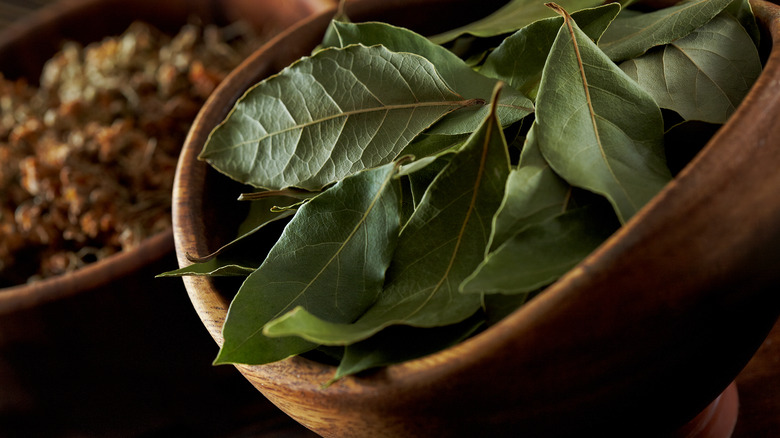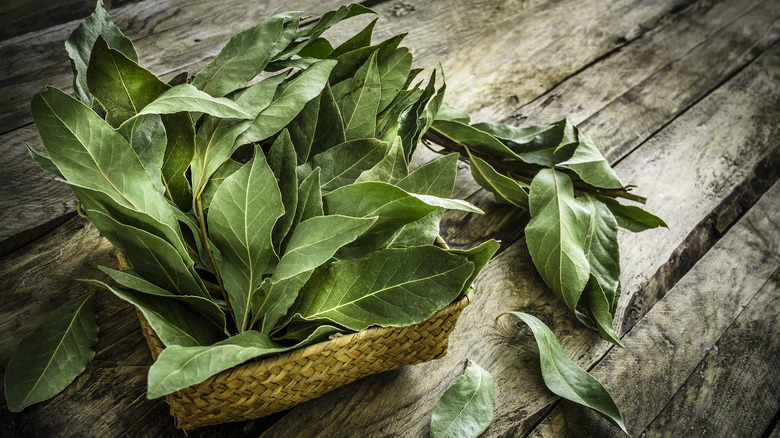The Great Bay Leaf Debate: Are They Culinary Wonders Or Pseudoscience?
First things first. This isn't a bay leaf hit piece. These little leaves have been used in stews, sauces, and soups since time immemorial, even adorning the laurels of Ancient Greek athletes. As with most things heavily steeped in history and tradition, many have begun to speculate why bay leaves are seemingly indispensable. Even professionals like Ina Garten have admitted that they continue to use bay leaves despite not knowing why a recipe calls for them or whether they make a difference. Is there a legitimate flavor benefit to using bay leaves? Or is it just a generational habit that would be better off consigned to history?
Certainly, it would be more convenient to eliminate bay leaves from the cooking process since incorporating them involves spending time removing them from the pot. (Or asking yourself, not for the first time, "Can you eat bay leaves?" when you can't find all of them.) Luckily, it's simple to determine the effect bay leaves have on a dish with the help of chemistry and a good old-fashioned taste test.
Bay leaves are an enigma of chemistry
Dried bay leaves may not smell like much, possibly leading folks to the conclusion that they must also not taste like much. However, it's what's inside (and how it reacts to cooking) that matters. As noted in the International Journal of Gastronomy and Food Science, chromatographic analysis of bay leaves identifies several key compounds with unique flavor profiles, with freshness coming from cineole, linalool, and pinenes, and peppery spice from elemcin, eugenol, and estagole.
Try snapping a bay leaf in half and giving it a good sniff. You'll notice an intriguing but subtle bouquet of aromas arising from that unique mix of compounds. During the cooking process, those oils are released into the food, imparting their complex flavor to whatever dish they've been added to.
Okay, enough theory; it's time for the practical. A taste test conducted by The Spruce Eats sampled the same recipe with and without bay leaves and found a noticeable difference, with the leafless version lacking complexity. The difference, described as "hard to place," matches perfectly with the multifaceted chemical profile of the oils in bay leaves. So, no, it's not pseudoscience. It's real science. The taste of bay leaves is hard to put a finger on because it's in their very nature. It's the "je ne sais quoi" factor that makes them so special.

